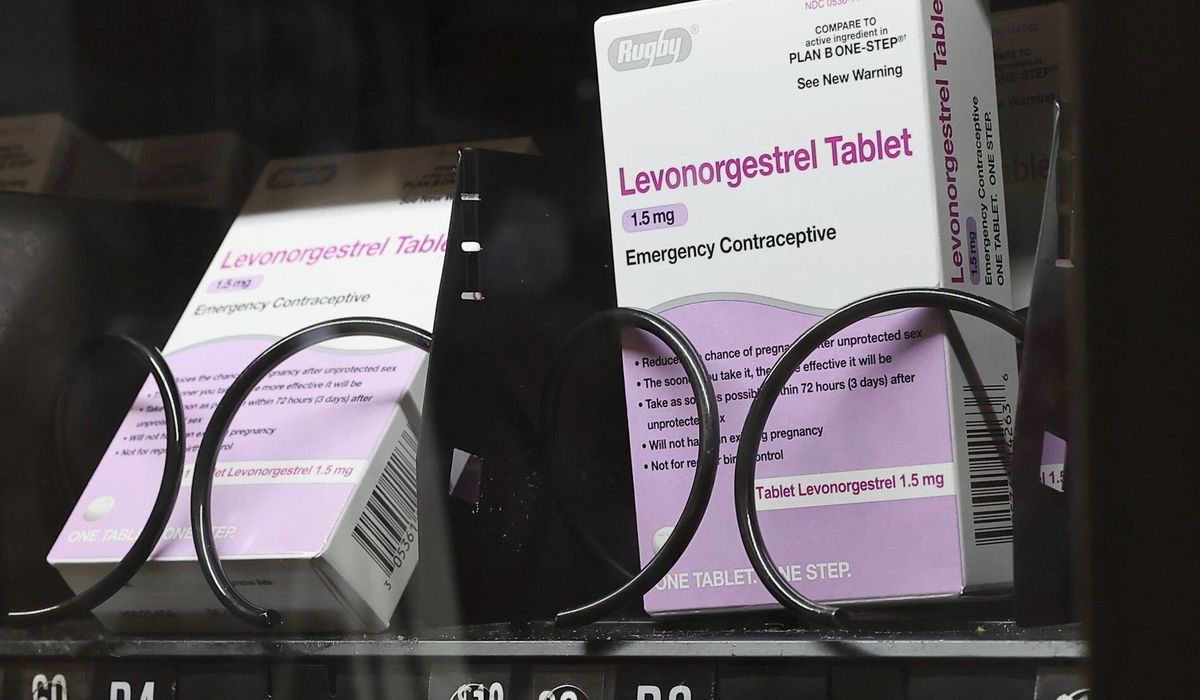Use of Plan B “morning after” pills more than doubled after women started buying them over the counter, and teen sex rates declined before the pandemic, a federal survey shows.
The Centers for Disease Control and Prevention on Thursday released a pair of reports on a national survey of 21,441 men and women, including 3,812 teenagers. The reports track sex and birth control habits among teens and contraceptive methods used by women aged 15-44.
Among teen girls and adult women who had intercourse with male partners, 26.6% reported using emergency contraception pills from 2015 through 2019. That was up from 10.8% in an earlier survey covering 2006 through 2010.
While the federal agency did not explain the surge, it corresponds to the increased availability of Plan B. Approved for medical prescriptions by the Food and Drug Administration in 1998, Plan B became available in drugstores without a prescription in 2006.
Mary Ziegler, a leading historian of contraception and abortion policies who was not involved in the survey, said the findings suggest emergency contraception has become more popular than barrier methods for some women.
“If it reflects women visiting gynecologists less often, it’s concerning,” said Ms. Ziegler, a law professor at the University of California, Davis. “It’s a warning sign that women need better access to their doctors and information about what’s out there.”
Among sexually active female teens, the CDC found that 22.3% said they had used emergency contraception through 2019, up from 13.7% in 2010.
Despite the surge in emergency contraception, one report noted that “similar percentages of sexually experienced women … had ever used any method of contraception” in both periods: 99.1% in 2006-10 and 99.2% in 2015-19.
The percentage of women who had used intrauterine devices grew nearly threefold, increasing from 7.7% in 2006-10 to 21.4% in 2015-19.
Over the same two periods, the share of women who used a combination of withdrawal and male condoms increased from 59.6% to 66.9%, and the share using only a condom grew from 93.4% to 95.1%.
However, the share of women using oral contraceptive pills dropped from 81.9% to 78.2%.
“Among women who had ever discontinued use of the pill or intrauterine devices due to dissatisfaction (and not for seeking a pregnancy), side effects were the most common reason,” CDC researchers Kimberly Daniels and Joyce C. Abma wrote in the report.
In the other report, the CDC found 38.7% of never-married teen boys and 40.5% of never-married teen girls said they had sex from 2015 through 2019. That’s the equivalent of 3.8 million each.
That represents a decline for teen boys from the 41.8% who reported ever having sex from 2006 through 2010. It was also down from 45.7% of male teens in 2002 and from 44.2% in 2011-15.
The rate was lowest for White males, with 33.1% saying they were sexually active through 2019.
By comparison, the CDC noted that the share of female teens having sex remained “stable across the four-time points.”
For both sexes, the report said “family and demographic characteristics” helped determine each teen’s level of sexual activity.
“For example, the percentages of male and female teenagers who had ever had sex and who had sex within the past 12 months and past 3 months were higher for teenagers who did not live with both biological or adoptive parents, or whose mothers had their first births before age 20,” wrote CDC researchers Abma and Gladys M. Martinez.
Some outside experts said the findings confirm earlier research showing that teen dating and sexual activity have declined gradually since the early 1990s.
There are “several plausible explanations” for why teen boys have become less active sexually over that time, said Michael New, a professor of social research at the Catholic University of America.
“Some have theorized that the prevalence of social media has made this current generation of teenagers more risk averse,” Mr. New said. “It should be noted that there has also been a larger investment in abstinence-only sex education since the 1990s. While the impact of these programs is disputed, it is possible that these programs are having some impact.”
𝗖𝗿𝗲𝗱𝗶𝘁𝘀, 𝗖𝗼𝗽𝘆𝗿𝗶𝗴𝗵𝘁 & 𝗖𝗼𝘂𝗿𝘁𝗲𝘀𝘆: www.washingtontimes.com
𝗙𝗼𝗿 𝗮𝗻𝘆 𝗰𝗼𝗺𝗽𝗹𝗮𝗶𝗻𝘁𝘀 𝗿𝗲𝗴𝗮𝗿𝗱𝗶𝗻𝗴 𝗗𝗠𝗖𝗔,
𝗣𝗹𝗲𝗮𝘀𝗲 𝘀𝗲𝗻𝗱 𝘂𝘀 𝗮𝗻 𝗲𝗺𝗮𝗶𝗹 𝗮𝘁 [email protected]



